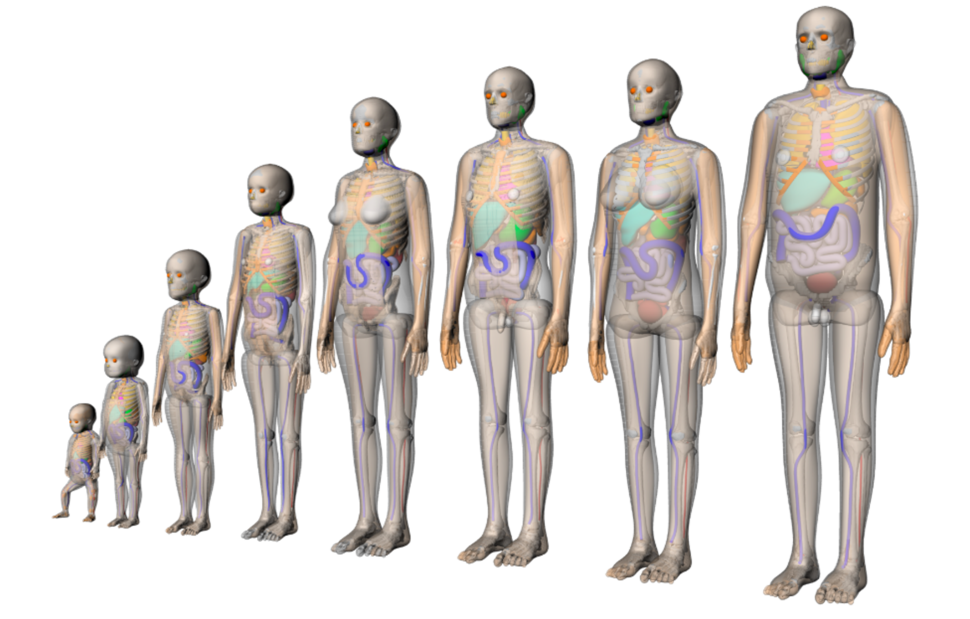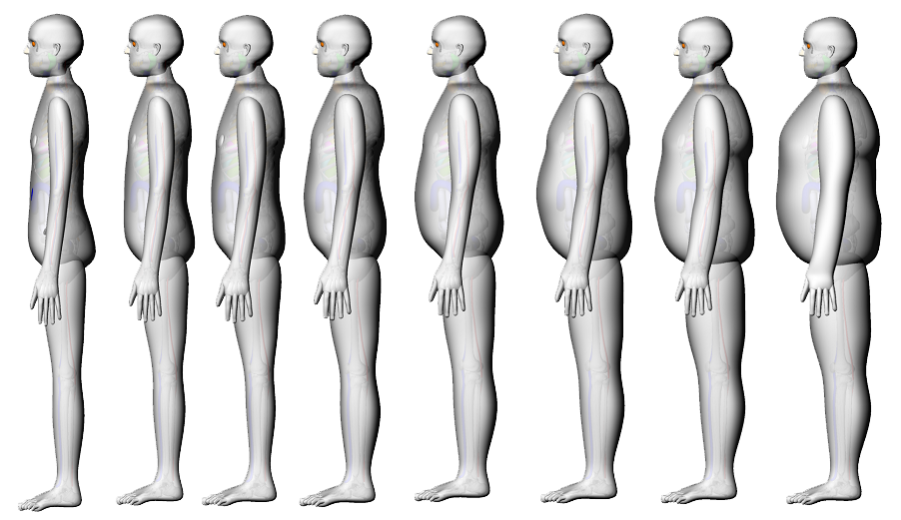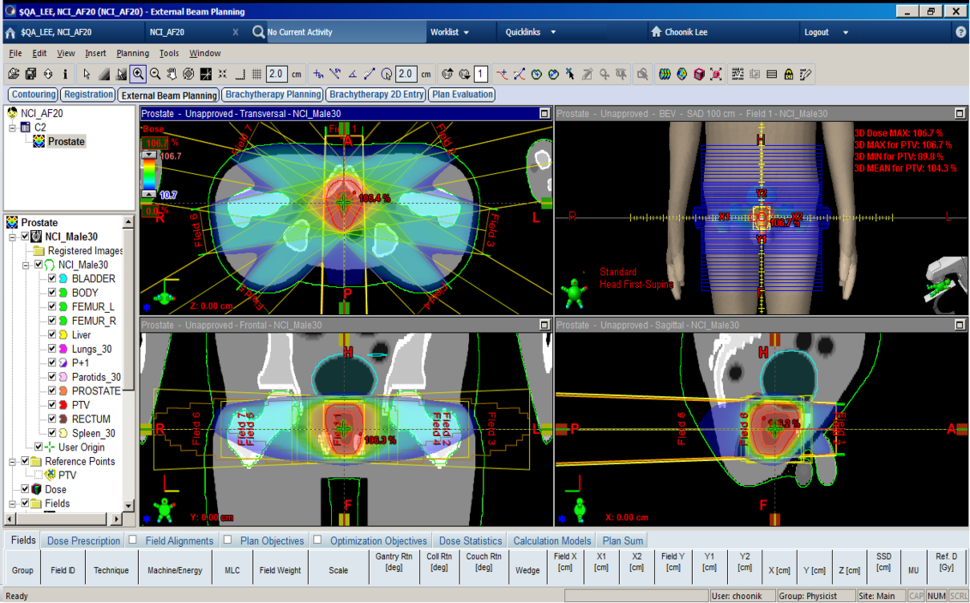Three-dimensional computerized representations of the human body, referred to as computational phantoms, have been used in the fields of medical physics and radiation protection for decades to study people exposed to medical, occupational, and environmental radiation. PHANTOM is a library of state-of-the-art, whole-body computational phantoms representing children and adults of different body heights and weights. Each phantom contains more than 100 carefully delineated organs or tissues.
Anatomical Realism
The PHANTOM library was developed from x-ray computed tomography (CT) images of patients; it is the product of a collaboration between the University of Florida and the National Cancer Institute1,2. Best-quality anatomical reference CT images were selected from an archive of 1,000+ patients. More than 100 organs and tissues were manually segmented and reviewed by practicing radiologists.
The original PHANTOM library consisted of a series of reference male and female anatomies (newborn, 1-, 5-, 10-, 15-year-old, and adult) and later extended to 370 phantoms representing children and adults of both sexes and various heights and weights [2]. NCI researchers also added anatomical details such as lymphatic nodes3,4, substructures of the heart (e.g., atria, ventricles, arteries), and substructures of the brain (e.g., grey and white matter, cerebellum, brain stem)5.
The PHANTOM library was carefully adjusted to match several international reference data, including reference person height and weight, organ mass, tissue elemental composition6,7, and dimensions of gastrointestinal structures8. The pediatric phantoms have been adopted by International Commission on Radiological Protection (ICRP) as an international reference.
State-of-the-Art and Versatile Format
The PHANTOM library was developed using mesh and non-uniform rational B-spline (NURBS) surfaces, the most advanced phantom architecture to date. The phantoms can be converted into voxel format compatible with most Monte Carlo radiation transport codes such as MCNPX, MCNP6, EGSnrc, GEANT4, and PHITS. Input decks for these codes describing the phantoms are also available. Some Monte Carlo codes can import the original surface geometry format.
Simulated CT images have been derived for the entire PHANTOM library and are written in Digital Imaging and Communications in Medicine (DICOM) CT format. An accompanying DICOM Structure file contains the contours for more than 100 structures included in the phantom. These files have been tested for compatibility with several commercial radiotherapy treatment planning systems (TPS). After importing into a TPS, users can create a treatment plan on the phantom CT and evaluate the dose to organs of interest.
How to Access This Resource
Non-Commercial Research Use
There is no charge to use these resources for non-commercial research purposes. Please click Software Transfer Agreement form, fill out the form in your web browser*, save it to your computer, then obtain the signatures and submit it to Dr. Choonsik Lee.
*Browsers tested with the form: Safari, Microsoft Edge, Google Chrome, and Firefox.
Commercial Use
Contact Dr. Kevin Chang of the NCI Technology Transfer Center to discuss accessing the free trial version and the licensing process for commercial use.


